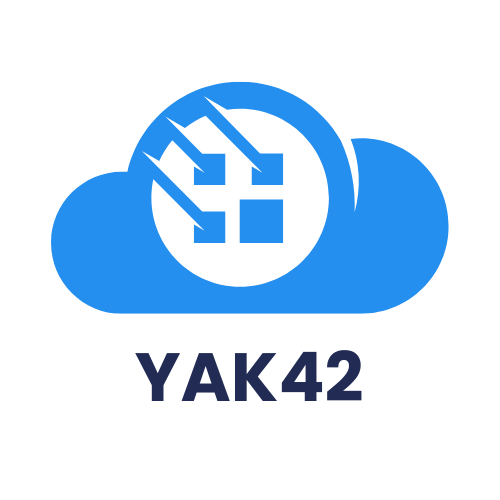Table of Contents
ToggleIn a world where losing your work feels like a rite of passage, cloud version control swoops in like a superhero with a cape made of backup files. Imagine never having to frantically search for that one elusive document or worry about overwriting your masterpiece. With cloud version control, it’s all about keeping your projects safe and sound while you sip your coffee and pretend to be productive.
Overview of Cloud Version Control
Cloud version control offers users a seamless way to manage changes in their projects. This technology enables collaboration in real time, allowing teams to access the latest updates from any location. Documenting changes helps track each iteration, making it simple to revert to previous versions if needed.
Centralized storage enhances data security and reduces the risk of data loss. By utilizing cloud services, teams store their files in a protected environment with regular backups. This capability reduces stress and encourages creativity since it minimizes the worry about lost progress or overwritten files.
Examples of popular cloud version control systems include GitHub, Bitbucket, and GitLab. Each of these platforms provides integrated tools for managing repositories, collaborating on code, and reviewing changes. Teams benefit from features like pull requests, which facilitate discussions around proposed modifications before they become part of the main project.
Access control is another critical aspect of cloud version control. Users can assign permissions based on roles, ensuring that only authorized individuals can modify or view certain files. This hierarchy not only enhances security but also streamlines project management.
Overall, cloud version control supports efficient workflows and fosters collaboration. Its advantages lead to increased productivity, allowing teams to focus on delivering high-quality results. With real-time updates and secure storage, it transforms how developers and teams handle their work, fostering innovation while safeguarding their projects.
Benefits of Cloud Version Control
Cloud version control offers a variety of advantages that enhance project management and teamwork. Users experience improved collaboration, seamless accessibility, and heightened security.
Enhanced Collaboration
Enhanced collaboration becomes a reality with cloud version control systems. Teams can work simultaneously on projects, making real-time contributions from various locations. Members view changes instantly, reducing misunderstandings and improving communication. Platforms like GitHub and GitLab encourage discussions around proposed modifications through features like pull requests. Everyone involved retains visibility into the project’s evolution, fostering a united approach to problem-solving and innovation.
Improved Accessibility
Improved accessibility serves as a core advantage of cloud version control. Users can access their projects from any device with an internet connection. This flexibility allows for work on the go, whether in the office, at home, or while traveling. As updates sync automatically, the latest version is always available, minimizing the risk of working on outdated files. This availability supports teams across different time zones, as collaboration doesn’t depend on a specific location.
Increased Security
Increased security significantly bolsters the protective measures surrounding projects. Cloud version control systems employ stringent data protection protocols to safeguard sensitive information. Access controls enable project leaders to set permissions tailored to team roles, ensuring that only authorized individuals modify files. Regular backups provide an additional layer of defense against data loss due to unforeseen circumstances. These security measures allow teams to focus on creativity and functionality without the constant worry of vulnerabilities.
Popular Cloud Version Control Tools
Several tools dominate the cloud version control landscape, each offering unique features that enhance project management and collaboration.
Tool 1: GitHub
GitHub ranks as the leading platform for developers worldwide. Many use it for hosting open-source projects, allowing collaboration across diverse teams. Integrated tools support issues, pull requests, and code reviews, promoting efficient workflows. Its extensive community fosters learning and sharing of knowledge. Access control features enable users to assign permissions according to roles. GitHub’s seamless integration with various development tools enhances overall productivity.
Tool 2: GitLab
GitLab offers a robust alternative to GitHub, featuring an all-in-one lifecycle management solution. Users can manage repositories, CI/CD pipelines, and project planning all within one interface. Enhanced security features, such as two-factor authentication, protect sensitive data. Integration capabilities with third-party applications streamline workflows further. Real-time collaboration tools facilitate communication and enhance team engagement. Extensive documentation assists users in leveraging its full potential.
Tool 3: Bitbucket
Bitbucket, now part of Atlassian, provides specialized support for teams using Jira and Trello. Cloud hosting enables users to access their repositories from any device, enhancing flexibility. Features like pull request workflows and inline commenting promote code quality and team collaboration. Bitbucket’s access control features allow precise permission settings for different users. Enhanced integration with CI/CD tools accelerates deployment. The platform also supports both Git and Mercurial, catering to various developer preferences.
Best Practices for Using Cloud Version Control
Cloud version control enhances workflow efficiency and team collaboration. To maximize its benefits, follow these best practices.
Organizing Repositories
Organizing repositories starts with clear naming conventions that reflect project purpose. Users benefit from a structured hierarchy that categorizes files and directories logically. Regularly archiving outdated branches prevents clutter, helping teams to maintain focus on active development. Consistently using README files provides essential documentation, aiding collaborators in understanding project details. Additionally, establishing a standard for commit messages supports clear communication regarding changes. Adopting these strategies improves visibility and accessibility, ultimately contributing to effective project management.
Managing Branches
Managing branches effectively allows teams to isolate features and fixes. Each new feature should ideally reside in its own branch, minimizing conflicts during integration. A consistent branching model, such as Git Flow or GitHub Flow, fosters collaboration across multiple developers. Users can facilitate code reviews by creating pull requests that highlight changes and allow for discussion before merging. Regularly merging changes from the main branch into feature branches keeps updates synchronized and reduces integration headaches. By setting clear guidelines for branch usage, teams can navigate the development process smoothly and keep projects on track.
Conclusion
Embracing cloud version control transforms the way teams collaborate and manage their projects. With its ability to streamline workflows and enhance security, it empowers users to focus on creativity without the constant worry of data loss. The seamless access to the latest updates from anywhere fosters real-time collaboration, making it easier for teams to work together effectively.
Adopting best practices in cloud version control further maximizes its advantages, ensuring organized and efficient project management. As organizations continue to evolve, leveraging these tools will be essential for maintaining productivity and achieving high-quality results in a fast-paced digital landscape.







